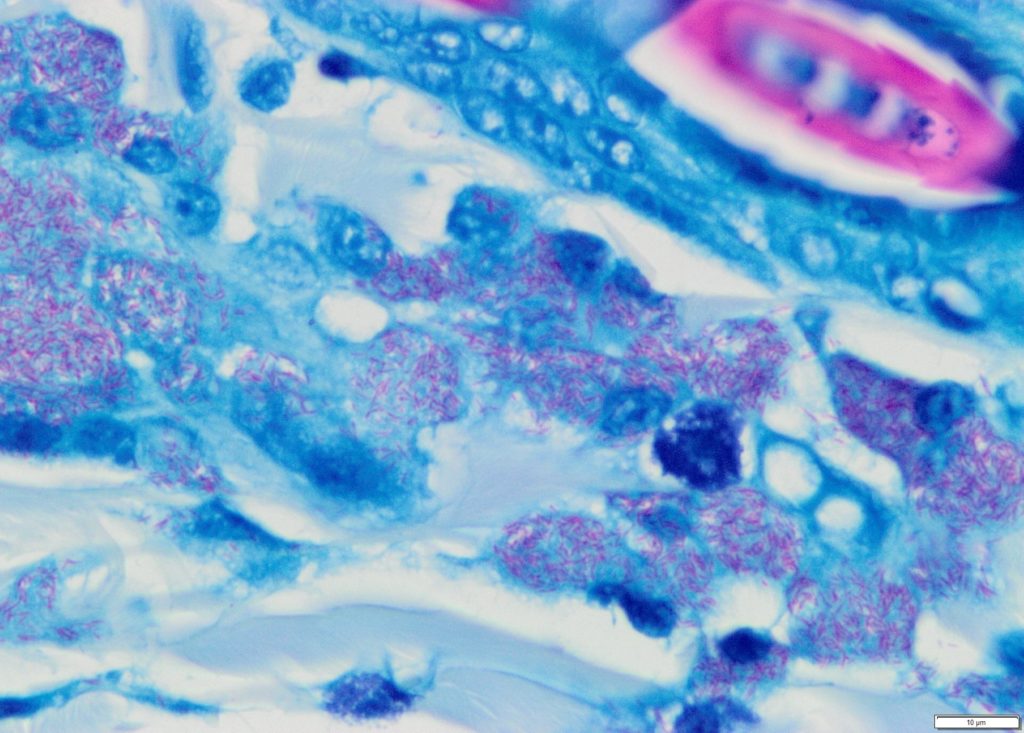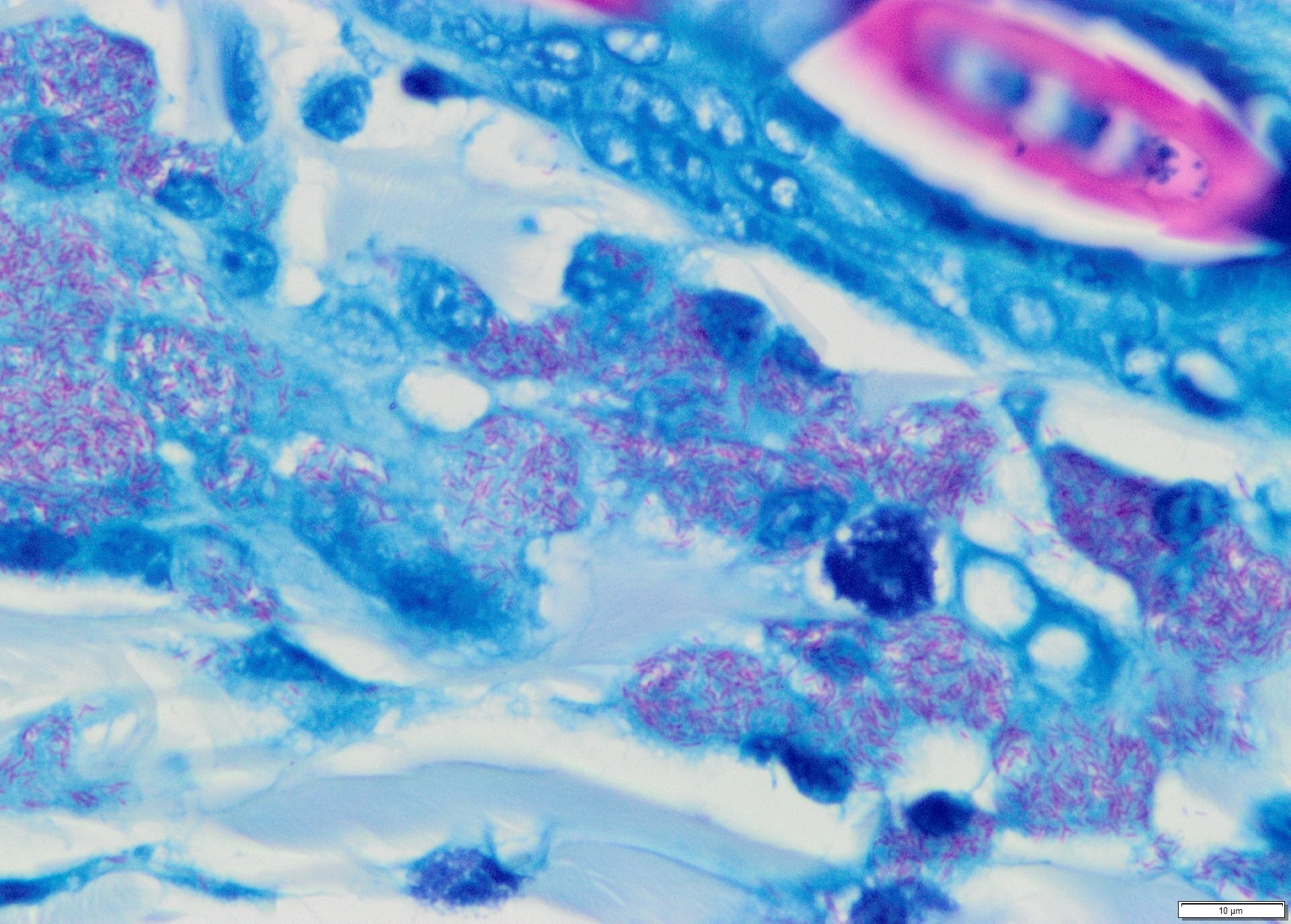ROB FAIRLEY
Cutaneous mycobacterial infections are common in cats in New Zealand and a variety of different mycobacteria may cause cutaneous lesions.
A study from the University of Melbourne several years ago, identified at least three different mycobacteria from lesions in cats from New Zealand. The most common was Mycobacterium lepraemurium, the classic cause of cat leprosy. This is mainly seen in young cats, presenting with one or a few nodules.
One case of M. avium was identified and several cases were due to a Mycobacterium labelled ‘East-Coast’ species at the time, but now proposed to have the name Mycobacterium lepraefelis. The latter had been identified from the east coast of Australia hence the name. This disease tends to occur in older cats and they often present with widespread skin lesions with massive numbers of organisms. The histological lesions in most cases caused by this mycobacterium are usually of a lepromatous nature and different from the tuberculoid type of lesions caused by M. avium or M. lepraemurium (occasional M. lepraefelis cases are tuberculoid).
New Zealand is different from Australia as we have had a major bovine tuberculosis problem, although this has now been reduced to a low level of infection in our cattle and deer herds.
Somehow, the infection in cattle was transmitted to brush-tailed possums, which became a highly significant source of infection. Brush-tailed possums often develop lesions in cutaneous lymph nodes that ulcerate and discharge large numbers of organisms to the exterior. As a result, cases of cutaneous bovine tuberculosis started to appear in cats in New Zealand in areas where tuberculosis was present in possums. The histological lesions of bovine tuberculosis in cats and cat leprosy are identical so when you have a case of cutaneous mycobacterial infection in a cat is it cat leprosy or is it bovine TB?

Bovine TB has been cleared from most of New Zealand and concern for the possibility of TB would mainly arise if a cat lives in or has come from an area where tuberculosis is present in possums.
If you have any concerns about the possibility of a cutaneous mycobacterial infection in a cat being bovine tuberculosis, you can contact your local TBfree veterinarian, who can advise you of the status of possum TB in the area of concern. It is also possible to perform PCR to detect the cat leprosy organism M. lepraemurium. This test is done by a laboratory in Palmerston North. If this test is negative we would need to enquire further as to what testing is possible to exclude bovine TB.
TBfree’s website shows a map of the disease control areas for bovine TB. There are also special testing areas outside of the movement control areas where it would be worth considering whether cases of mycobacterial infections in cats could possibly be bovine TB. This map will change with time.
In the South Island, the major areas of TB are the West Coast, parts of North Canterbury, Kaikoura, Southern Marlborough, and an eastern area of Central Otago NW of Dunedin. In the North Island the major areas of TB are Central Hawkes Bay heading in towards Taupo and the Rimutaka Forest Park east of Wellington harbour extending into the Akatarawa Forest/ lower Tararua Forest Park east of the Kapiti Coast (see the TBfree website map for details).

